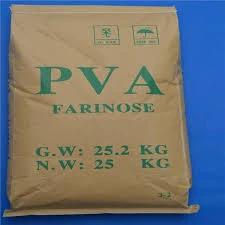The Role of Tile Bond Chemicals in Modern Construction
In the realm of modern construction, tile bond chemicals play an essential role, acting as the unsung heroes that ensure the integrity and durability of tiled surfaces. Whether in homes, businesses, or public spaces, the proper application of tile adhesives significantly impacts not only the aesthetic quality but also the longevity of tile installations. This article delves into the importance of tile bond chemicals, the types available, and their application processes.
Understanding Tile Bond Chemicals
Tile bond chemicals, commonly referred to as tile adhesives or thin-set mortars, are specialized products designed to create a strong and lasting bond between tiles and the substrate they are installed on. These adhesives come in various formulations, catering to different types of tiles—including ceramic, porcelain, glass, and natural stone—and varying environmental conditions. With advancements in technology, modern tile adhesives have evolved to provide better performance, ease of use, and safety.
Types of Tile Bond Chemicals
Tile bond chemicals can be broadly categorized into three main types
1. Cement-based Adhesives The most commonly used tile adhesives, these are composed of cement, sand, and polymers. They provide strong bonding capabilities and are suitable for a wide range of tiles and substrates. Their versatility makes them ideal for both residential and commercial applications. They are also available in modified forms that enhance performance and flexibility.
2. Epoxy Adhesives Known for their exceptional bonding strength, epoxy adhesives are resistant to water, chemicals, and temperature changes. They are particularly beneficial in areas exposed to moisture, such as bathrooms and kitchens. However, they require careful mixing and prompt application, as they can harden quickly.
3. Organic Adhesives These are typically used in lighter applications, such as vinyl tiles or for securing cushions. While they provide a decent bond, they are less common in heavy-duty or high-moisture environments.
Factors Influencing the Choice of Tile Bond Chemical
Several factors should be considered when selecting a tile bond chemical
- Tile Type Understanding the physical characteristics of the tiles you are using is critical. For instance, porcelain tiles may require a specific type of adhesive due to their density and low porosity.
tile bond chemical

- Substrate Material Different substrates (concrete, drywall, wood, etc.) may require different types of adhesives to ensure proper bonding and prevent issues such as cracking or debonding.
- Environmental Conditions Areas with high moisture levels or temperature fluctuations necessitate the use of specialized adhesives that can withstand such conditions without degrading.
- Application Method The choice of adhesive may also depend on the method of tile installation, whether it be traditional thin-bed or thicker applications.
Application Process
Proper application of tile bond chemicals is crucial for successful tile installation
1. Surface Preparation Ensure that the substrate is clean, dry, and free from contaminants. This step is vital for achieving a strong bond.
2. Mixing the Adhesive Follow the manufacturer's instructions for mixing ratios, particularly with cement-based and epoxy adhesives. Consistency is key.
3. Applying the Adhesive Use a notched trowel to spread the adhesive evenly on the substrate. The notch size should correspond to the tile size – larger tiles often require larger notches.
4. Setting the Tiles Press the tiles firmly into the adhesive, ensuring there are no air pockets. Spacing should be maintained using appropriate spacers.
5. Curing Time Allow sufficient curing time as specified by the manufacturer before grouting or exposing the tiles to moisture.
Conclusion
In conclusion, tile bond chemicals are vital for successful tile installations in various environments. Their ability to provide stability and durability underpins the beauty and functionality of tiled surfaces. Understanding the different types available, the factors influencing their selection, and the application process ensures that any tile project can achieve not only aesthetic appeal but also long-lasting performance. As construction methods continue to evolve, the role of tile bond chemicals will only become more significant in meeting the demands of modern architecture and design.
-
The Application and Significance of Construction RdpNewsMay.19,2025
-
Industrial Grade HpmcNewsMay.19,2025
-
Building Coating Adhesive Building Coating Adhesive HpmcNewsMay.19,2025
-
Application Of Hpmc For Detergent For Detergent In DetergentsNewsMay.19,2025
-
Application Of Hpmc Cellulose In Cement-Based MaterialsNewsMay.19,2025
-
Application Of High Quality Hpmc For Construction In The Field Of ConstructionNewsMay.19,2025




